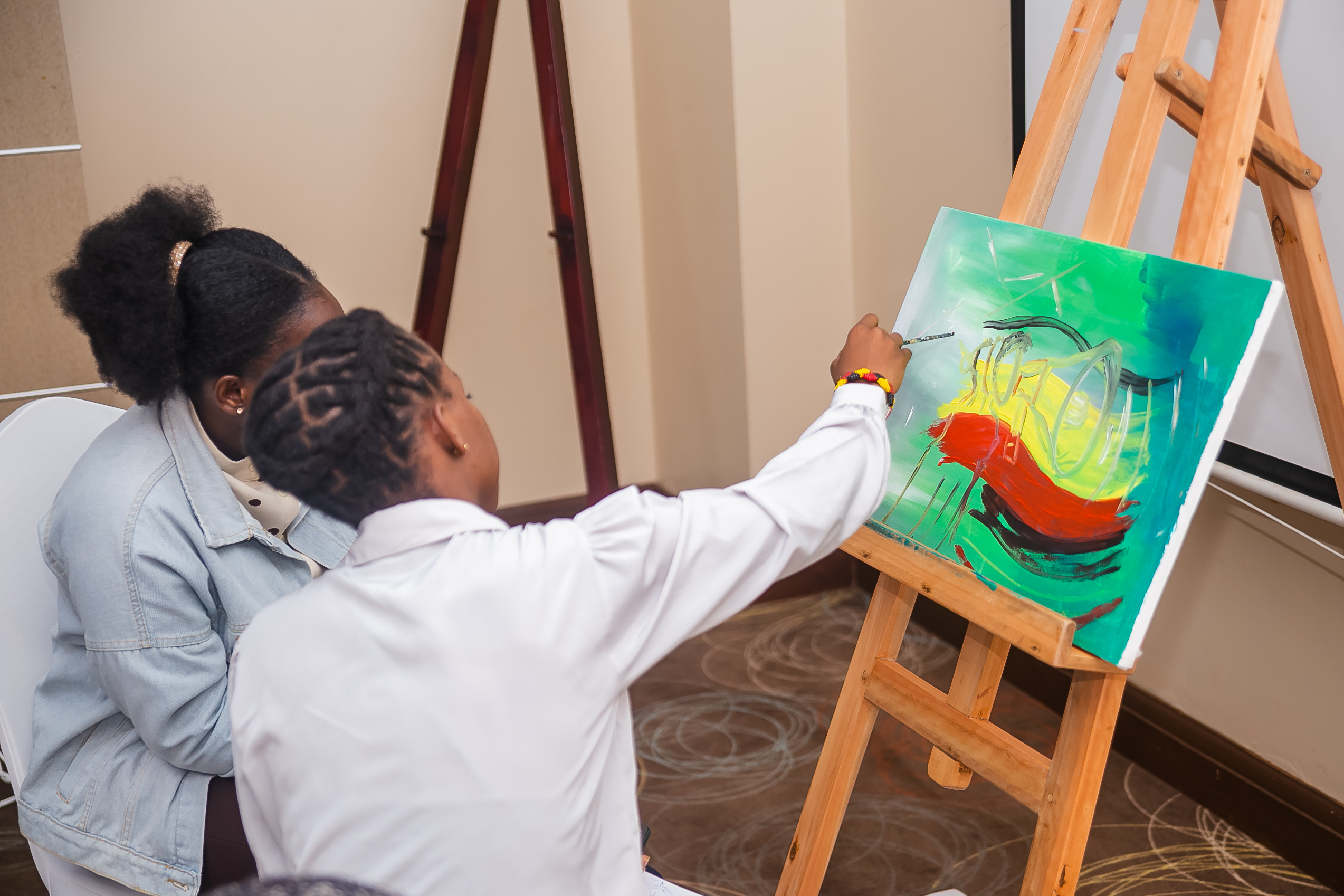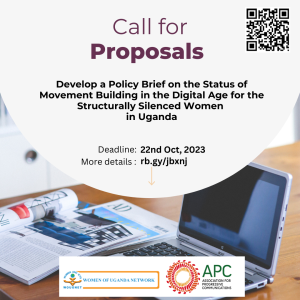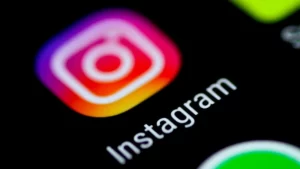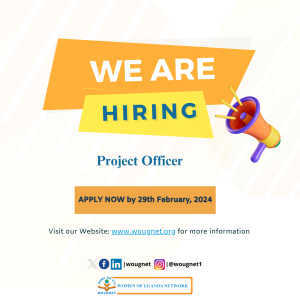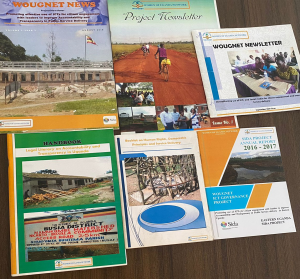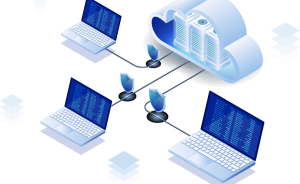Structurally silenced women including young women, feminists, activists and Women Human Rights Defenders among others live a complex life in Uganda and need to feel safer and able to advocate for their rights freely.WOUGNET held an art conversation on 19th December 2022, where female artists worked with structurally silenced women who had conversations that enabled them to draw their stories in the form of art. Under the Our Voices Our Futures (OVOF) Project, structurally silenced women were able to tell their stories, life experiences, challenges faced, and possible recommendations through the art pieces. It was impeccable how they used the opportunity to reflect on their journeys and envision what they want moving forward in their strides toward improving the lives of structurally silenced women. Each participant was assigned an artist and had an opportunity to connect with the feminist artist and reflect on this story in an art piece.
A woman with a disability noted that she works with persons with disability, and the group is characterized by women with hearing and visual disabilities; the deaf, the little people, the vitiligo, and those who use crutches and wheelchairs. She mentioned some of the challenges these people face including losing out on education and low self-esteem because of the social judgment from able-bodied people, gender-based violence, and forced marriages among others.
She went ahead and explained the beauty in these disabilities through her art piece/work where she said the face in the painting represents people with disabilities; she is half albino(vitiligo) with one blind eye plus a hearing aid on her left ear. Blue is a calm color that represents the dreams these people have, dark blue emphasizes the dreams and visions they have and how different they are from what society has masked them to be. They would want their defects portrayed as beautiful. Negative words the society says about them are emphasized in the opposite way to give them encouragement. For example “Oli star” (You are a star), you are beautiful, among others. The texture in the painting is rough relating to the writings in the blind read.
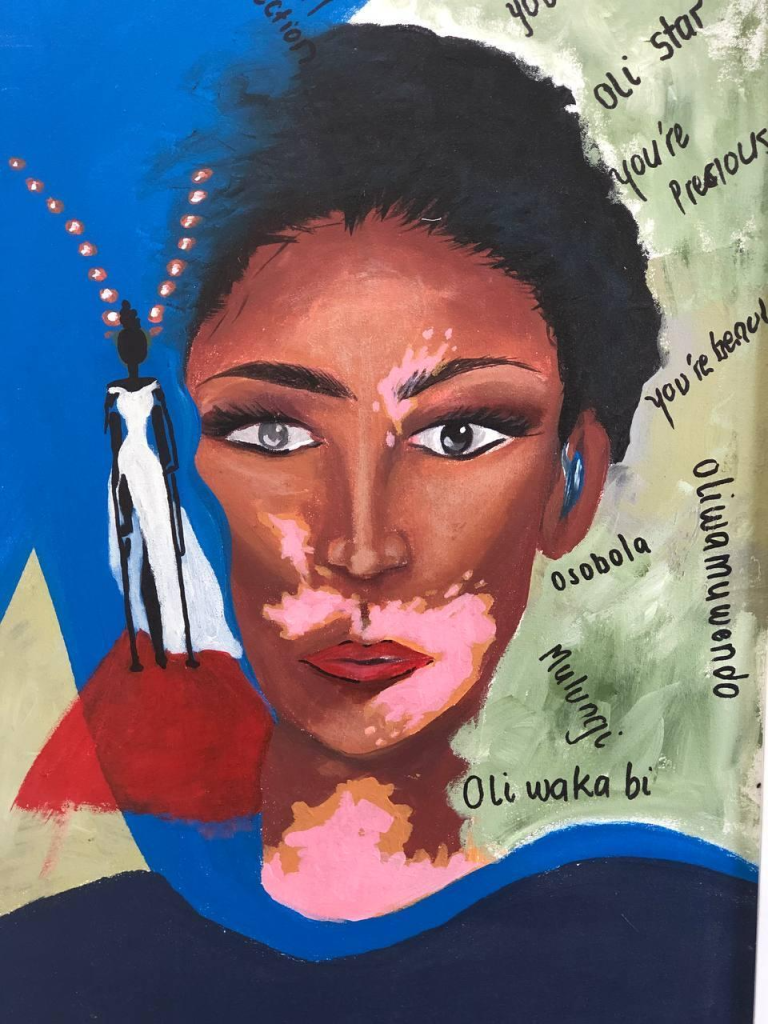
A feminist activist describes advocacy as an intense journey mainly because the group(sex workers) she advocates for is highly segregated and not welcomed in Uganda, making coexistence hard. She noted some of the challenges they face as advocates including being beaten in peaceful demonstrations, being closed down and denial of access to their physical premises, and blackmail among others. She added that the internet, especially social media has exposed them to harsh responses from the public. And some religious leaders fuel the inequality through their teachings thus inciting violence to them from the community and segregation.
She continued and said technology has been a major catalyst in their journey as advocates through social media which has exposed them to a wider community in turn creating inclusivity, belonging, and adopting new strategies to move forward. She added that unifying or collaborating among fellow advocating organizations has amplified their voices as they have improved after being able to closely work with mainstream women organizations and Civil Society Organizations.
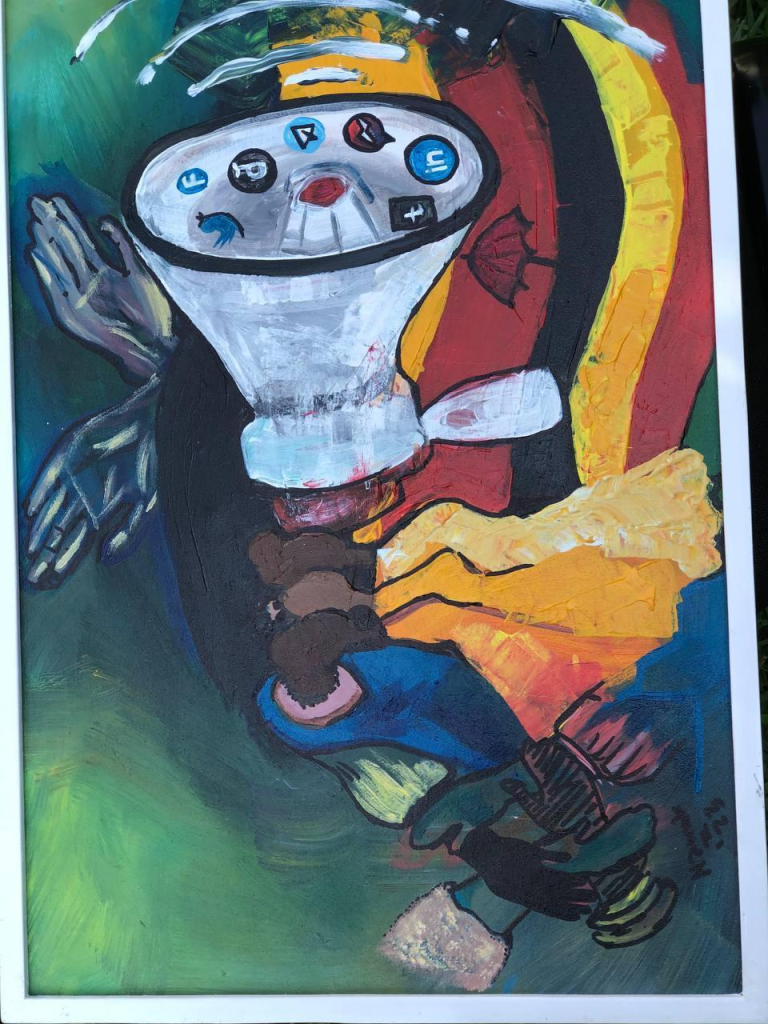
The final participant from the She Laws movement said the megaphone in her acrylic art piece represents their voice making a statement on an online platform and the face with no eyes, nose, mouth, or ears show how women are often silenced but they still show up and face what’s placed in front of them.
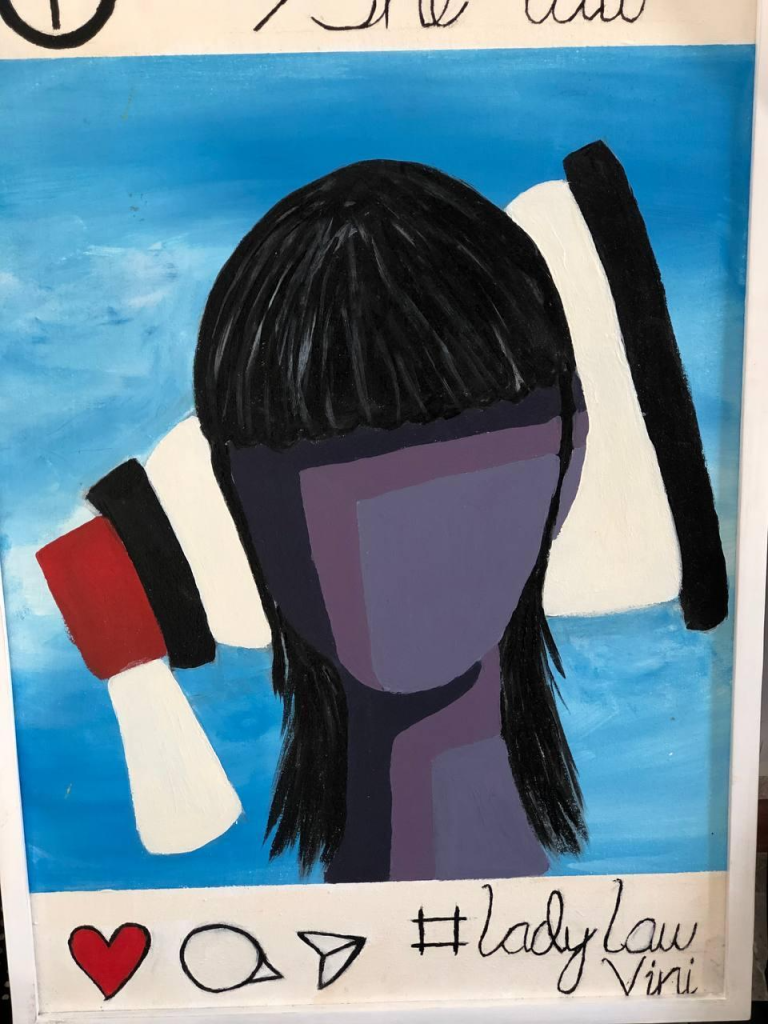
Below are challenges faced by structurally silenced women
They encounter being closed down and denied access to their physical premises. Some active participants are beaten in peaceful demonstrations, their properties destroyed, blackmailed, followed to their homes, and sometimes arrested. Such actions curtail women’s rights and women living in fear and in danger of insecurity.
Furthermore, the internet, especially social media has exposed them to harsh responses from the public, that is cyberbullying and online harassment. For instance, young women with disabilities face social judgment such as body shaming from able-bodied people. This has caused low self-esteem and a lack of acceptance in society which makes them feel unsafe in public.
More to that, persons with disabilities miss out on a lot of activities like sports and other fun activities that may involve or require them to participate with their body with 100% perfection. They also face discrimination in getting transport for example; the taxi conductors also charge for the wheelchair which leads to depression and loss of interest.
In addition, they (Albinos and Vitiligos) live in fear of being kidnapped for sacrifices. Politically, they can’t stand a chance to win an election if they stood for a position because they are not considered to be worthy and capable to carry out the role of that office. In the long run, these challenges have a toll on their mental health by birthing anxiety, stress, and trauma. It also leads individuals to low self-esteem, manifesting in shame, fear as well as poor health.
However, they are possible remedies/recommendations for such acts
Women of Uganda Network (WOUGNET) implemented the Our Voices, Our Futures (OVOF) Project for all women, especially for structurally silenced women with an aim of amplifying voices and increasing their visibility, thus taking their rightful places in civic space and participation across key spaces like online space, physical public space, legal and policy space. For instance, WOUGNET has carried out several digital pieces of training to empower and equip these groups with knowledge, skills, and competence in the use of digital technology that is the use of Zoom, and on how they can be safe online which has reduced online harassment and increased social inclusion amongst structurally silenced women. OVOF beneficiaries stated/shared;
‘’OVOF is an innovative and tremendous platform for structurally silenced women because there has been meaningful involvement of women in their different diversities. For example, right from the inception to other platforms where we used to meet for organizing, you could see each group being represented in different platforms. There was no element of discrimination or stigma. This has helped the groups to convene and discuss issues that affect them at all channels and movements’’.
‘’OVOF has created awareness through training. It has created different opportunities. For example, meeting different stakeholders like policy makers whereby we had to air out our challenges so that they can be put in policies.’’
‘’ OVOF has created a safe space for women to ask different questions more openly and assertively, especially for rights when it comes to engaging in spaces online like the internet (which came at the right time, during COVID)’’.
Structurally silenced women need to collaborate among fellow advocating organizations so as to amplify their voices as they improve and be able to closely work with mainstream women organizations/ civil society organizations. Additionally, technology has been a major catalyst for advocacy through social media which has encouraged communication via Zoom, Google Meet, and Twitter spaces which has enabled meetings and work to go ahead, especially during lockdown. Advancement in technology has also provided the possible information for research, sensitization, updates regarding advocacy, and soft storage for their data and information for future use. There is a need for collective advocacy when engaging policymakers.
In conclusion, structurally silenced women were able to get a safe space and a conducive environment/ platform to air out their views and share their experiences and the different challenges they face. It was very sound, amazing, and thoughtful to have female artists represent in drawing/writing the stories of structurally silenced women since they understand what women go through.
Compiled by;
Babirye Roseline,
Program Assistant, Gender and ICT Policy Advocacy

